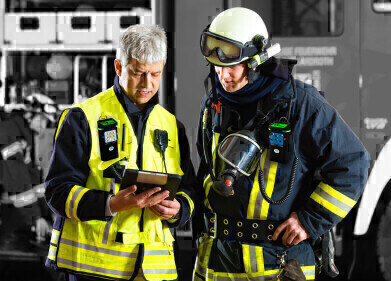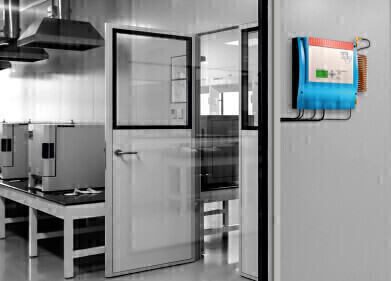Fixed gas monitor
You will be poisoned long before you might blow up
Oct 19 2021
The use of transmitters with catalytic LEL sensors to ensure plant safety is self-evident for stationary gas detection systems. However, the situation is different for portable devices. Catalytic LEL sensors can be used to detect gasoline, but are not recommended for middle distillates like diesel or kerosene.
There are two reasons for this of which one must be aware – response time and toxicity. The first challenge is the size of the molecules. The larger the molecule, the slower a sensor responds, and also, the lower the relative response. The second reason is that the toxic exposure limit for fuels like diesel, jet fuel and kerosene is very low. For example, the TLV for gasoline is 300 ppm. The TLV for kerosene is only 30 ppm.
First avoid the poisoning with a PID sensor …
The 100% LEL concentration for kerosene is 0.7% volume, which corresponds to 7000 ppm. That means 10% LEL kerosene still is 700 ppm. If one uses a catalytic LEL sensor and sets the alarm at 10% LEL, even if the sensor would respond perfectly for kerosene, it would take a concentration over 23 times higher than the exposure limit to activate the alarm.
For this reason, GfG recommends a PID sensor to measure kerosene and gasoline vapor with portable devices like the G460 or the G999P, which allows setting the alarm at the ppm toxic exposure limit.
One should still have means of monitoring LEL installed in the instrument as well, but action should be taken at the toxic limit concentration.
… then use CC or IR sensors to monitor LEL.
If you decide to use an additional catalytic sensor, for example with the G460, to monitor combustible gases below the LEL you should use a non-filtered version of a CC LEL sensor. It covers all flammable gases and vapors, is warranted for 2 years but allows for a wider range of gases to be detected and provides faster response time compared to the filtered version.
Another approach is to use an infrared (IR) LEL sensor to measure explosive range concentration gasoline and kerosene. The IR LEL sensor responds better than the CC LEL sensor to these vapors. However, you still have the issue of taking action at the TLV rather than taking action at 10% LEL. Also, since IR LEL sensors cannot detect hydrogen, GfG normally includes an electrochemical hydrogen sensor in any portable instrument that includes an IR LEL sensor.
In this way, a multi-gas monitor continues to fulfill its function when employees enter contaminated areas wearing respirators or protective suits, for example.
Digital Edition
PIN 25.6 Buyers' Guide
January 2025
Buyers' Guide Directory - Product Listings by Category - Suppliers Listings (A-Z) Articles Analytical Instrumentation - ASTM D7042: The Quantum Leap in Viscosity Testing Technology -...
View all digital editions
Events
Jan 20 2025 San Diego, CA, USA
Jan 22 2025 Tokyo, Japan
Jan 25 2025 San Diego, CA, USA
SPE Hydraulic Fracturing Technology Conference and Exhibition
Feb 04 2025 The Woodlands, TX, USA
Feb 05 2025 Guangzhou, China
-1863-Sign.jpg)
-G460.jpg)
-G999P.jpg)


















